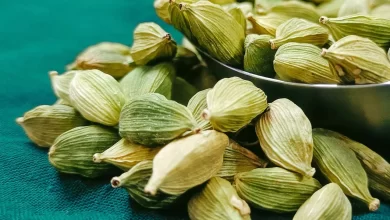Sugar, a crystalline carbohydrate derived primarily from sugarcane and sugar beet plants, is a fundamental ingredient in human diets and a ubiquitous presence in culinary culture. Beyond its role as a sweetener, sugar plays diverse roles in cooking, from caramelizing and preserving to enhancing textures and flavors. While offering energy for the body, excessive consumption of sugar has raised concerns about its potential health impacts, including contributing to obesity and various metabolic issues. The history of sugar is intertwined with global trade, colonization, and cultural exchange, as it was historically considered a luxury. As the focus on health and nutrition deepens, the balance between enjoying sugar’s pleasures and its potential risks becomes a central consideration in modern dietary choices.
- Sugar is primarily extracted from sugarcane and sugar beet plants. Sugarcane accounts for the majority of the world’s sugar production.
- There are various types of sugar, including granulated sugar, powdered sugar (also known as confectioner’s sugar), brown sugar, and specialty sugars like demerara and turbinado.
- Sugar belongs to the carbohydrate family and is classified as a simple carbohydrate. Its chemical name is sucrose, composed of glucose and fructose molecules.
- Sugar is a source of calories, providing around 4 calories per gram.
- Sugar is used not only as a sweetener but also as a key ingredient in baking, preserving, fermenting, and enhancing flavors in various dishes.
- When sugar is heated, it undergoes caramelization, resulting in the development of rich flavors and a brown color. This process is used in making caramel sauces and candies.
- Sugar has been historically used as a preservative due to its ability to create an environment that inhibits bacterial growth. It’s commonly used in jams, jellies, and other preserves.
- Molasses is a byproduct of the sugar refining process and is rich in minerals. It’s often used to add flavor to foods and baked goods.
- The top sugar-producing countries include Brazil, India, China, Thailand, and the United States.
- Sugar was a luxury item in the past and was known as “white gold” due to its high value. It played a significant role in colonial trade and was linked to the rise of plantations.
- Excessive consumption of added sugars has been associated with health issues such as obesity, diabetes, tooth decay, and heart disease.
- Many processed foods and beverages contain added sugars, contributing to high sugar intake in modern diets.
- Sugar consumption can trigger the brain’s reward centers, leading to cravings and potentially contributing to overeating.
- Various sugar substitutes are used as alternatives for people looking to reduce their sugar intake. Examples include stevia, aspartame, and sucralose.
- Sugar can be found in unexpected foods like sauces, condiments, and even some savory dishes.
- The sugar industry has faced criticism for its marketing practices, influence on policy, and funding of research that downplays the negative health effects of sugar.
- In some countries, food labels are required to specify the amount of added sugars in products, helping consumers make informed choices.
- Sugarcane is also used to produce bioethanol, an alternative fuel source.
- Apart from sugar production, sugar beets are used for animal feed and for producing biofuels and industrial products.
- Awareness of health concerns has led to shifts in consumer preferences, with some people opting for less processed and naturally occurring sugars.
- Consuming excessive sugar can lead to tooth decay and cavities. Bacteria in the mouth feed on sugars, producing acids that erode tooth enamel.
- Fruits contain natural sugars like fructose, which are accompanied by fiber, vitamins, and antioxidants, making them a healthier choice than added sugars.
- Organizations such as the World Health Organization (WHO) recommend limiting added sugar intake to less than 10% of total daily calories.
- Sugar not only sweetens baked goods but also interacts with other ingredients, affecting the texture, color, and moisture of the final product.
- Apart from sucrose, there are other natural sugars such as lactose (found in dairy products) and glucose (a component of many carbohydrates).
- Refined sugar is processed to remove impurities, while unrefined sugars like turbinado and demerara retain more of their natural molasses content.
- Some researchers suggest that excessive sugar consumption can lead to addictive behavior due to the brain‘s response to sugar’s effects.
- High sugar intake may contribute to chronic inflammation, which is associated with various health issues including heart disease and diabetes.
- Historical documents reveal that the sugar industry funded research in the 1960s that shifted blame for heart disease from sugar to saturated fats.
- Cravings for sugary foods can be influenced by various factors, including genetics, emotional states, and habitual consumption.
- Sugary beverages like sodas, energy drinks, and sweetened teas are major contributors to added sugar intake and have been linked to health problems.
- Some natural sweeteners, like honey and maple syrup, are considered healthier alternatives due to their additional nutrients and lower glycemic index.
- The preference for sweet flavors is thought to be innate in humans, likely due to the association of sweetness with energy-rich foods in nature.
- Sugar is used in various ways across cultures, such as in Middle Eastern desserts like baklava, Indian sweets like gulab jamun, and Latin American treats like churros.
- As public awareness of health concerns grows, some food and beverage manufacturers are reducing sugar content in their products or offering sugar-free alternatives.
- Sugar isn’t just for desserts; it’s used in savory dishes to balance flavors and enhance caramelization.
- Some countries have imposed taxes on sugary beverages to discourage consumption and generate revenue for health initiatives.
- Lactose is the natural sugar found in milk and dairy products. Lactose intolerance is the inability to digest lactose due to insufficient lactase enzyme.
- Sugar has played a role in celebrations and rituals around the world for centuries, symbolizing sweetness and joy.
- Alongside traditional sweeteners, modern sugar alternatives like erythritol, xylitol, and monk fruit extract are gaining popularity in low-carb diets.






